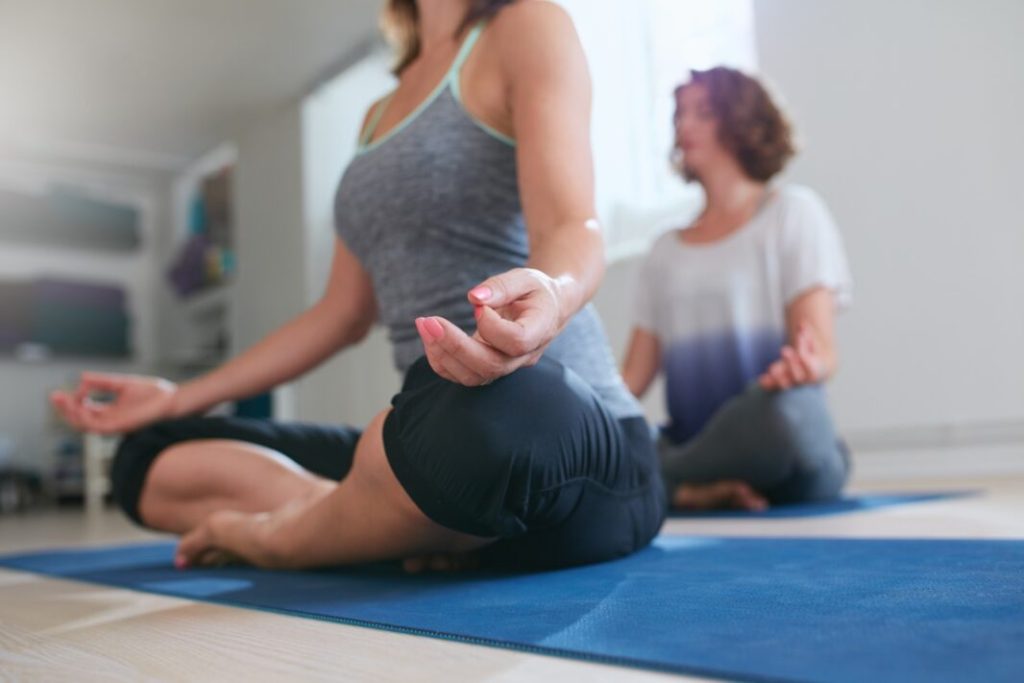Introduction
Runner’s knee —pain around or behind the kneecap —is a common issue for many runners. It can also be an early indicator of knee osteoarthritis (OA), a condition where the cartilage in the knee gradually wears down, leading to discomfort, stiffness, and limited mobility. Staying active is essential, but so is protecting your knees from long-term damage. Fortunately, with the right stretches and strengthening exercises , you can support your knee health and lower your risk of injury. In this article, we’ll explore the latest research on how running influences knee cartilage and provide practical tips for ways you can care for your knees at home.
How Running Affects Knee Cartilage and Joint Function
Researchers have used advanced imaging to study how running impacts knee cartilage—the smooth, rubbery tissue that allows your joints to move painlessly. After running, they’ve observed that cartilage temporarily changes as it reacts to the stress placed on it, but typically recovers with rest.
Whether this response is good or bad depends on several factors, including your knee alignment , how forces are distributed through your legs, and the overall stability of your joints. Poor muscle support or improper running form can increase stress on the cartilage , potentially speeding up wear.
That’s why strengthening muscles around the knee and improving your balance are key. Targeted exercises help distribute forces evenly, reducing the risk of damage to your cartilage and making your joints more resilient to the demands of running.
What Research Tells Us About Osteoarthritis Risk in Runners
Studies show runners who have muscle imbalances or biomechanical problems—like weak hips or overpronating feet—are at a higher risk of developing knee OA . For instance, weak hip muscles or excessive inward rolling of the feet can cause uneven pressure on the knee , raising the likelihood of cartilage wear.
The takeaway: addressing these issues with strengthening and corrective exercises makes a real difference. By building the right muscle groups and refining your running technique, you can help your knees move more efficiently and reduce injury risk .
It’s also clear that knee injuries are common among runners. In one study, nearly half of running injuries affected the knee , and those who ran longer distances were at higher risk. This underlines why prevention and proper training matter so much for runners of all levels.
Simple and Effective Prevention: Stretches and Strengthening Exercises
To keep your knees healthy, make stretching and strengthening exercises part of your routine. Stretching the quadriceps, hamstrings, and iliotibial band before and after a run helps improve flexibility and relieves tension that can pull on the knee .
Strengthening key support muscles like your quads, glutes, and calves helps stabilize your knees and prevent excessive stress during runs. Simple moves like squats, lunges, and step-ups can be done at home and offer big benefits.
It’s equally important to monitor your running form and increase mileage or intensity gradually. Ramping up too quickly or running with poor technique can set you up for overuse injuries . Staying consistent with these habits goes a long way in safeguarding your knees.
Why Recovery Matters and How to Do It Right
Rest and recovery are just as crucial to knee health as your workouts. After a tough run, your cartilage and muscles need time to repair and adapt to the stress they’ve endured.
Incorporate gentle mobility exercises to keep your joints moving and boost circulation. If you notice pain or discomfort, don’t ignore it—cut back your training and allow yourself the rest you need. Ice and compression can help with swelling, and if issues persist, consulting a physical therapist can provide tailored guidance.
Small adjustments in how you train and recover can make a big difference in long- term joint health , helping you bounce back from minor aches before they become major problems.
New Trends in Managing Runner’s Knee and Knee Osteoarthritis
Recent research is shifting how we think about running and knee health . Experts now recommend allowing more time for recovery between challenging workouts and increasing intensity or distance gradually, in line with how your body is responding. Balancing stress and recovery encourages stronger, healthier cartilage rather than breakdown.
It’s also vital to focus on proper exercise technique. Avoid movements that put excessive strain on your knees , like deep squats done without good form, and prioritize movements proven to support knee strength and stability. Smarter training means better performance—and healthier knees .
Conclusion
Both research and real-world experience show that runners can protect their knees and lower their risk of osteoarthritis by training and recovering wisely. Regular stretching, strengthening exercises at home, and mindful running form all play an important part in keeping your knees strong and pain-free.
Personalize your regimen and reach out to a professional if needed, so you can keep running for years to come—confident that you’re supporting your joint health every step of the way.
References
Grana, W. A., & Coniglione, T. C. (1985). Knee disorders in runners. The Physician and Sportsmedicine, 13(5), 127-133. https://doi.org/10.1080/00913847.1985.11708793
Rubin, B. D., & Collins, H. R. (1980). Runner’s Knee. The Physician and Sportsmedicine, 8(6), 47-58. https://doi.org/10.1080/00913847.1980.11948616
Noguchi, J., Ito, Y., & Murakami, H. (1997). Knee disorders in runners. Orthopedics & Traumatology, 46(3), 628-630. https://doi.org/10.5035/nishiseisai.46.628




